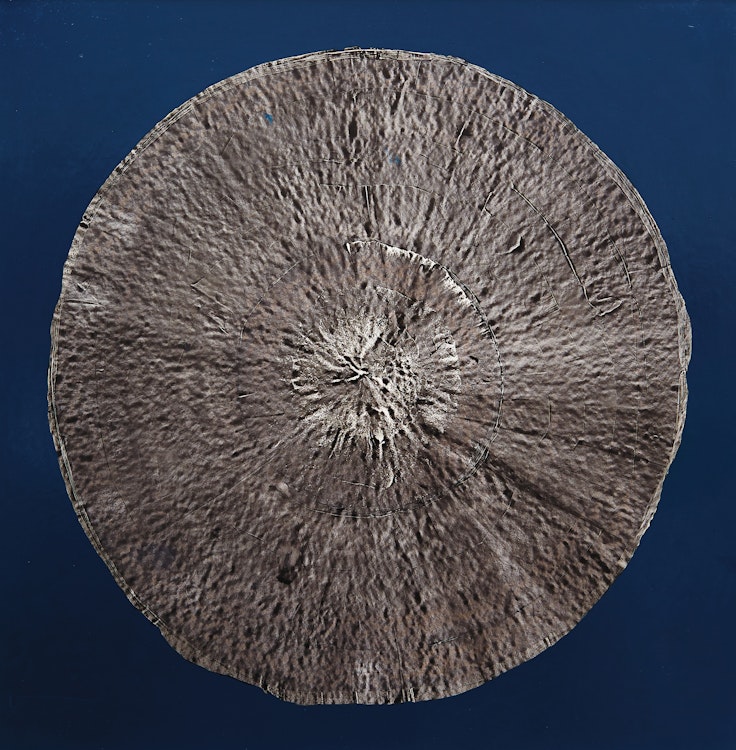Untitled Mandala SA 79-413 by Arthur Fortescue McKay

Art McKay
Untitled Mandala SA 79-413
enamel on masonite
signed, dated 1979 and inscribed “SA-79-413” on the reverse
48 x 48 ins ( 121.9 x 121.9 cms )
Auction Estimate: $6,000.00 - $8,000.00
Price Realized $7,670.00
Sale date: November 20th 2018
The Collection of TransCanada PipeLines Limited, Calgary
Share this item with your friends
Arthur Fortescue McKay
(1926 - 2000) Regina Five
Born in Nipawin, Saskatchewan, he started serious study of art about the age of twenty. He attended the Provincial Institute of Technology and Art, Calgary (1946-48); Académie de la Grande Chaumière, Paris (1949-50); Columbia University, New York and the Barnes Foundation, Merion, Pennsylvania (1956-57). In 1958, he began his non-objective paintings as he once explained, “I do not title paintings by personal and poetic association to various experiences in the past, since I am making paintings which are things in themselves rather than pictures of something or references to something else. They contain no ‘object-matter’ to which one could refer with a name. They do, however, contain ‘subject-matter’, the effect of which one can point to or suggest with a name.”
Viewing his 1968 show at the Norma Mackenzie Art Gallery, Katie Fitzrandolph explained, “They are subtle things, heavy with mood, and to explain that an untitled work from 1960 is like darkness plunging downward into light doesn’t come anywhere near describing either the painting or the feelings it brings forth. McKay…described his paintings as contemplative images, and as ‘about the past and future.’ They do have a timeless quality and an inevitability, which makes them both peaceful and quiet, and at the same time disturbing in an intellectual rather than emotional way. In many of the drawings; and some of the earlier paintings in the retrospective show, such as Epic Theme from 1960, there is a feeling of the primeval sea crashing on rocks recently solidified from the molten globe, splattering whiteness and foam at the beginning of time. In Mandela, 1962, the concentric forms seem to tell of a long-ago battle or feast, in a forgotten alphabet writing a lost tongue…. Two smaller paintings from 1967 have a light such as is found in Renaissance paintings bathing Madonnas and saints. The light bathes nothing but the surface of the painting, and is in itself the painting. The earth colors used in most of the paintings add to the sense of archaeological discovery, as to the glyphic textures of accounts of long forgotten wars and celebrations.”
Source: "A Dictionary of Canadian Artists, Volume 4: Little - Myles", compiled by Colin S. MacDonald, Canadian Paperbacks Publishing Ltd, Ottawa, 1978

